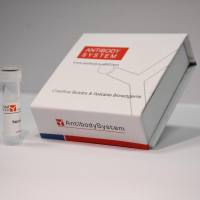Quantitative Detection of Viral Gene Expression in Populations of Epstein-Barr Virus-Infected Cells In Vivo
互联网
互联网
相关产品推荐

InVivoMAb 抗小鼠 CD274/PD-L1/B7-H1 Antibody (10F.9G2),InVivo体内功能抗体(In Vivo)
¥2700

SARS-CoV-2 (2019-nCoV) Spike Gene ORF cDNA clone expression plasmid (Codon Optimized)
¥4690

Epstein-Barr virus (Herpesvirus 4)/EBV Glycoprotein/gp350/EBV GP350 兔多抗
¥600

VCATH/VCATH蛋白/Cysteine proteinase Short name: CP蛋白/Recombinant Autographa californica nuclear polyhedrosis virus Viral cathepsin (VCATH)重组蛋白
¥69

Capsid L1重组蛋白|Recombinant Human Papilloma Virus type 16 (HPV 16) L1 protein (VLP)
¥3220
相关问答

